Hawks have long been admired for their impressive hunting skills and breathtaking aerial displays. These majestic birds of prey are known for their keen eyesight, agility, and speed, making them formidable hunters during the day.
However, when the sun sets and darkness engulfs the sky, one may wonder if these birds continue their hunting activities.
In this article, we will explore ‘Do hawks hunt at night – hawk hunting habits’ and uncover the mysteries behind their nocturnal hunting habits.
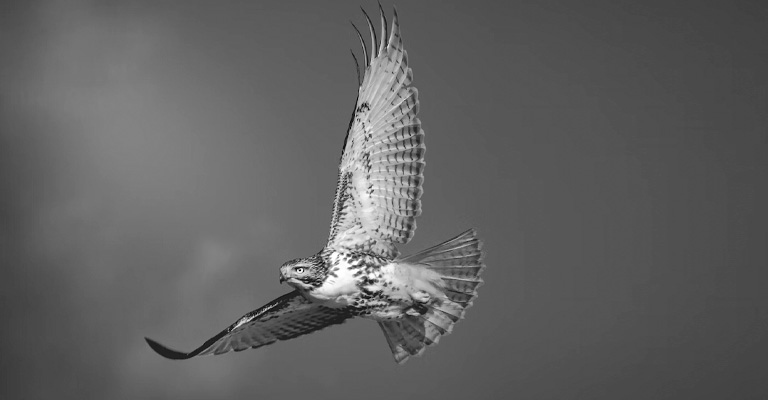
Do Hawks Hunt at Night? – Hawks Hunting Habits
Before delving into the nocturnal behavior of hawks, it’s essential to understand that the term “hawk” encompasses a broad range of species. There are over 200 species of hawks, and each exhibits distinct hunting strategies and adaptations.
Some common hawk species include the red-tailed hawk, Cooper’s hawk, and Harris’s hawk, among others.
Diurnal Nature of Hawks
The majority of hawk species are primarily diurnal, meaning they are most active and hunt during daylight hours. These diurnal hawks rely on their exceptional eyesight to spot prey from great distances and employ swift aerial maneuvers to catch their targets.
Their eyes are equipped with a high number of specialized light-sensitive cells called cones, allowing them to discern colors and perceive fine details.
Nocturnal Hawks: The Owl Hawk
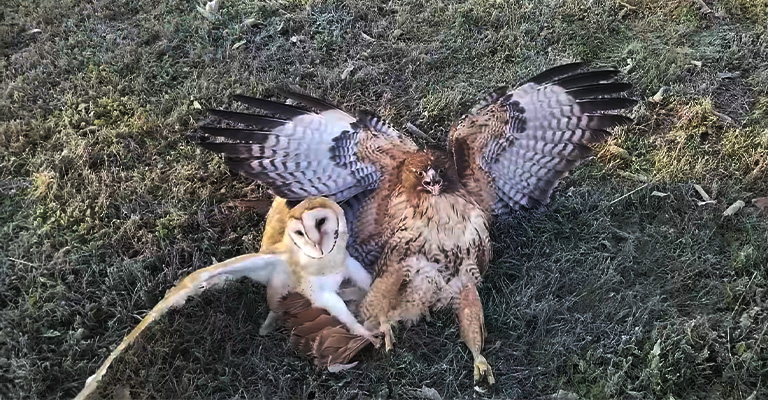
Although most hawks are diurnal hunters, there is one exception: the Northern Hawk Owl (Surnia ulula). The Northern Hawk Owl, often referred to as the “owl hawk,” is a unique species that exhibits nocturnal hunting behavior.
Unlike other hawks, this particular species has evolved adaptations that allow it to thrive in dimly lit conditions.
The owl hawk possesses large, forward-facing eyes, similar to those of owls. This arrangement allows them to gather more light and enhances their ability to see in low-light environments.
They rely on their exceptional night vision to locate and capture prey, which includes small mammals, birds, and insects that are active at night.
Nocturnal Adaptations
While most hawks are not specifically adapted for hunting at night, they do possess some attributes that enable limited nocturnal activity.
These adaptations are particularly useful during twilight periods, such as dawn and dusk, when lighting conditions are less favorable.
Enhanced Low-Light Vision
Hawks have larger pupils than humans, allowing more light to enter their eyes. Additionally, their retinas contain a higher concentration of light-sensitive cells called rods, which aid in detecting movement and shapes in low-light conditions.
Keen Hearing
Hawks possess acute hearing capabilities that help them locate prey, especially in situations where visual cues may be limited. By listening for rustling sounds or the movement of prey on the ground, they can accurately pinpoint potential targets even in the dark.
Opportunistic Hunting
Some hawks may take advantage of artificial lighting, such as streetlights or illuminated areas near buildings, to hunt nocturnal insects that are attracted to the light source. This behavior allows them to capitalize on available food sources during the night.
How Do Hawks Hunt – in Groups or Pairs?
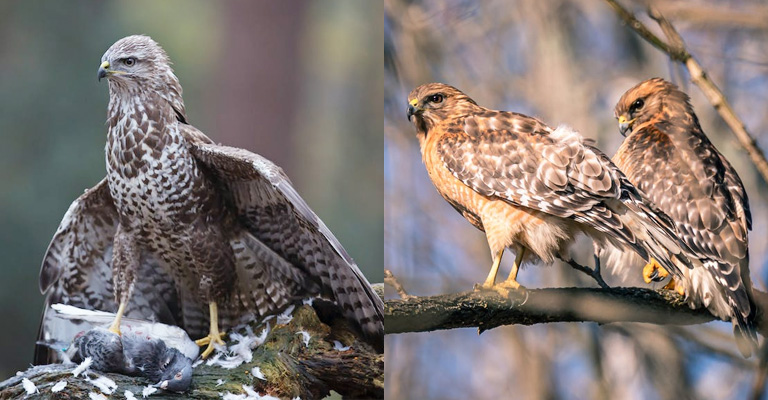
Hawks are known for their predatory nature and impressive hunting abilities. While hunting behaviours vary among hawk species, they generally hunt individually rather than in groups or pairs. Here’s a breakdown of how hawks typically hunt:
Individual Hunting:
Most hawk species are solitary hunters. They rely on keen eyesight, agility, and speed to locate and capture prey. Hawks are often perched high on tree branches or utility poles, scanning the surrounding area for prey such as small mammals, birds, reptiles, or insects.
Stealthy Approach:
Hawks employ a stealthy approach when hunting. Once they spot prey, they use their mighty wings and sharp talons to launch themselves into flight. Hawks often approach their prey from above or behind, taking advantage of surprise and camouflage to get as close as possible without alerting their target.
Soaring and Stalking:
Hawks are known for their soaring ability, utilizing rising air currents to gain altitude and survey large areas in search of prey. Once they identify a potential target, they enter a stalking phase, closely monitoring the prey’s movements and assessing the optimal timing for an attack.
High-speed Dive:
Hawks are famous for their dramatic hunting manoeuvre, stoop or dive. When they spot an opportunity, hawks fold their wings tightly against their body and plummet toward their prey at high speeds. This rapid descent allows them to increase their momentum and precisely strike their target.
Capture and Consumption:
Once a hawk successfully captures its prey, its sharp talons grasp and immobilize the prey. Hawks have gripping, solid power, allowing them to maintain a firm hold on their catch. They may use their beak to deliver a final blow to ensure the prey is subdued.
Hawks then consume their yield, tearing it apart with their beak and swallowing smaller pieces.
Overall, hawks are highly skilled and efficient hunters, relying on their abilities to capture and consume their prey successfully.
Where Do Hawks Go at Night?
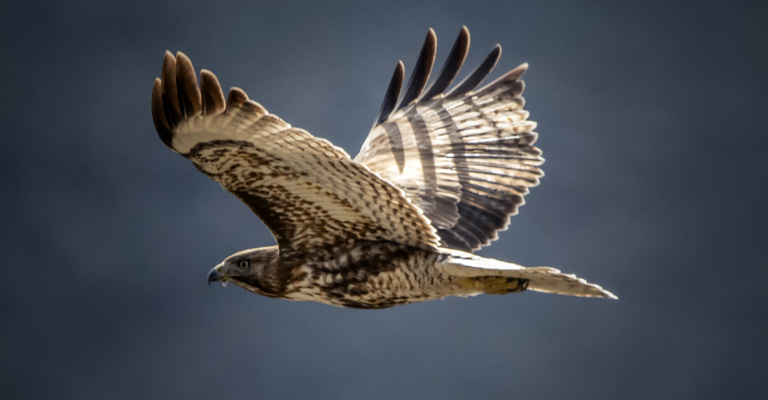
At night, hawks exhibit various behaviors and seek out safe and comfortable locations for resting and roosting.
While their specific choices may depend on factors such as habitat, weather conditions, and available resources, here are a few common places where hawks go at night:
Trees
Hawks often choose large trees with dense foliage as roosting spots. They seek out trees that provide cover and protection from predators while offering a clear vantage point for observation.
Hawks may select sturdy branches or well-hidden areas within the tree canopy to spend the night.
Cliff Ledges
In areas with rocky terrains or cliffs, some hawk species may roost on ledges or rocky outcrops. These elevated locations provide security, as they are often inaccessible to predators and offer a clear view of the surroundings.
Evergreen Forests
Some hawks, such as the Red-tailed hawks, may prefer roosting in evergreen forests. The dense foliage of coniferous trees provides shelter from the elements and can offer better protection from wind and precipitation.
Power Poles and Utility Structures
Hawks, especially in urban or suburban areas, may use man-made structures as roosting sites. Power poles, transmission towers, and other elevated structures can provide a suitable perch for hawks to spend the night.
Wetlands and Marshes
Certain hawk species, like the Marsh Hawk (also known as the Northern Harrier), may roost in or near wetland areas.
These habitats often provide ample prey and cover, making them attractive for hunting during the day and roosting at night.
It’s important to note that hawks are typically solitary birds and tend to maintain their personal space even when roosting.
However, certain hawk species, such as the Red-shouldered Hawk, may gather in communal roosts during colder months or in areas with high population densities.
Hawks select roosting spots that offer security, protection, and easy access to hunting grounds for the following day. These locations vary based on their natural environment and the specific needs of each species.
By choosing these roosting sites, hawks can rest, conserve energy, and prepare for another day of hunting and soaring through the skies.
What Time of Day Do Hawks Attack?
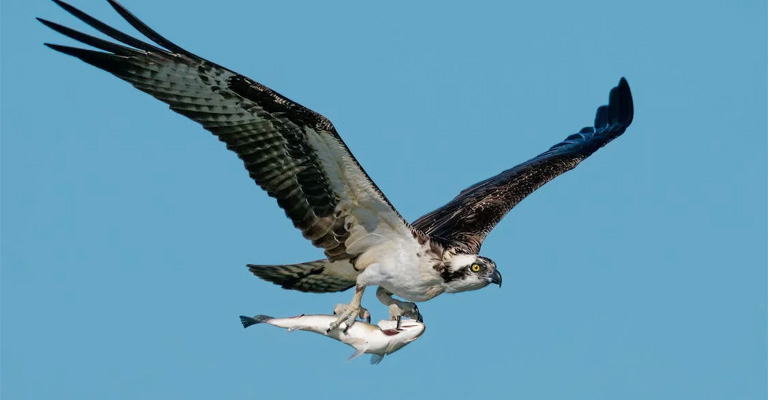
Hawks are primarily diurnal hunters, which means they are most active and likely to attack during daylight hours.
They are known to be particularly active during the early morning and late afternoon periods. These times of the day offer optimal lighting conditions, allowing hawks to spot their prey more easily.
During the early morning, hawks take advantage of the rising sun to search for food. They may perch on high vantage points, such as trees or utility poles, scanning the surrounding area for movement or potential prey.
As the day progresses and temperatures rise, thermals (rising columns of warm air) form, providing hawks with effortless soaring and improved visibility. This soaring behavior allows them to cover large areas in search of prey.
In the late afternoon, hawks become more active again, as the temperature begins to cool.
They may engage in aerial displays, territorial behavior, or resume hunting activities. During this time, they take advantage of the diminishing daylight to maximize their chances of successful hunting.
It’s worth noting that while hawks primarily hunt during the day, their specific hunting patterns and behavior can vary among species.
Some hawks may exhibit different hunting strategies or adapt their hunting times based on factors such as prey availability, weather conditions, or local environmental characteristics.
Overall, hawks are most likely to attack and engage in hunting activities during daylight hours, particularly in the early morning and late afternoon when lighting conditions are optimal for spotting and pursuing their prey.
Is There a Hawk That Hunts at Night?
Yes, there is a unique hawk species known for its nocturnal hunting behavior—the Northern Hawk Owl (Surnia ulula).
Unlike most hawks, which are primarily diurnal hunters, the Northern Hawk Owl is adapted to hunt in low-light or dark conditions, making it an exception among its hawk relatives.
The Northern Hawk Owl, sometimes referred to as the “owl hawk,” has several adaptations that enable it to thrive as a nocturnal hunter.
It possesses large, forward-facing eyes similar to those of owls, which allows for better light-gathering and improved vision in dimly lit environments. These large eyes are essential for detecting and locating prey during the night.
Unlike true owls, which are silent hunters, the Northern Hawk Owl hunts actively during the night. It uses its keen hearing, along with its excellent night vision, to locate small mammals, birds, and insects that are active during the nocturnal hours.
The owl hawk often perches on high vantage points, such as tree branches, where it can survey its surroundings and listen for the movements of potential prey.
While the Northern Hawk Owl is a unique example of a hawk species with nocturnal hunting behavior, it is important to note that most hawks are primarily diurnal hunters and are not specifically adapted for hunting in the dark.
Their hunting strategies and adaptations are predominantly optimized for daylight hunting, taking advantage of their exceptional eyesight and aerial prowess.
FAQs
While hawks are not nocturnal hunters, they do possess some ability to see in low-light conditions. Their large pupils and higher concentration of rod cells in their retinas allow them to gather more light and detect movement and shapes during twilight periods.
Hawks are generally solitary hunters and tend to hunt alone. However, some species, such as Harris’s hawk, are known to engage in cooperative hunting. In such cases, a group of hawks works together to capture prey, displaying a unique social hunting behavior.
The diet of hawks varies depending on the species and their habitat. They are carnivorous and typically prey on small to medium-sized animals, including rodents, birds, reptiles, and insects. Some larger hawk species may also hunt rabbits and other mammals.
Hawks primarily rely on their excellent eyesight to locate prey. Their sharp vision allows them to spot movement from great distances, and they use this advantage to scan open areas or soar above landscapes while searching for potential targets.
While it is rare for hawks to pose a threat to large pets or livestock, smaller pets, such as small dogs, cats, or rabbits, can be vulnerable to hawk predation, especially in areas where hawks are abundant. It is advisable to keep small pets supervised and provide appropriate shelter or enclosures to minimize the risk of predation.
Final Words
That was all about ‘Do hawks hunt at night – hawk hunting habits’. While the majority of hawk species are diurnal hunters, the Northern Hawk Owl stands out as an exception, exhibiting remarkable nocturnal hunting behavior.
These owl hawks have evolved specific adaptations, including enhanced low-light vision and keen hearing, which enable them to thrive in darkness.
Other hawks, although not primarily nocturnal, possess certain traits that allow them to engage in limited hunting activities during twilight periods.
Understanding the behavior and adaptations of hawks sheds light on the diverse strategies employed by these magnificent birds of prey.
While their reputation as diurnal hunters remains unshaken, the unique characteristics of the owl hawk and the adaptations of other species highlight the versatility and adaptability of hawks in different environmental conditions.